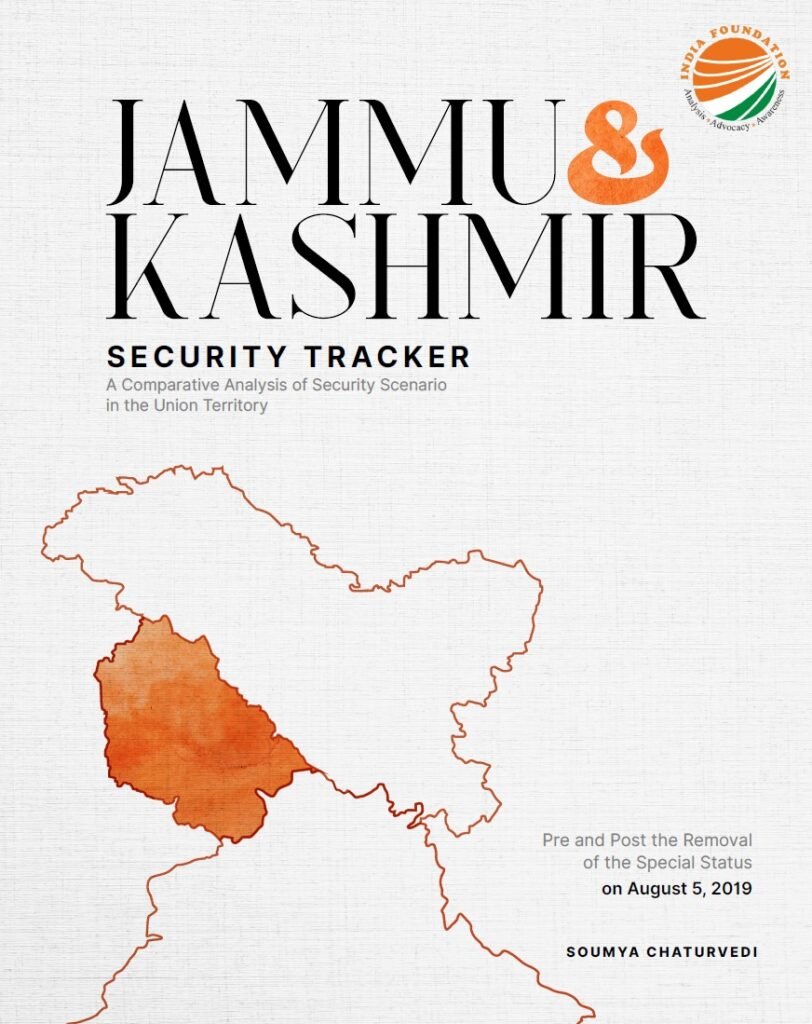
On August 5, 2019, a constitutional amendment to Article 370 was introduced in Rajya Sabha, by which the temporary special status accorded to Jammu & Kashmir [J&K] was proposed to be revoked. Arguably, for long the misuse of this special status had created favourable conditions for Pakistan to infuse jihadi terrorism into India, while also being aggressive on the borders through its armed forces.
The removal of the special status raised the possibility of two alternate scenarios, amongst others. First, the revocation of special status could lead to increase in violence in J&K. The dissent or unacceptance of the decision by Pakistan’s civil and military structure, separatists and terrorists could manifest in the form of increased terrorist attacks or other such allied activities and possibly, an increase in unprovoked ceasefire violations from Pakistan. The alternative scenario being – with the direct supervision available along with reduced local political interferences, the security infrastructure could perform better leading to a peaceful climate which would enable the speedy development of J&K and lead to complete integration of the region with the rest of the country.
The J&K Security Tracker Project was conceived with the intention of analysing these two hypotheses. The primary aim of the project was to quantify the verticals of physical manifestation of violence arising from the political agenda of terrorists and state enemies in J&K.
Observations and Findings
Despite the limitations due to the nature of data collecting, there were significant trends observed in J&K in the one year following the decision, i.e. between August 5, 2019 – 2020. The overall security scenario has improved in the year following the decision as compared to the year preceding the decision.
Post the Aug 5, 2019 decision, the number of terrorist attacks targeting civilians was reduced from at least 44 to 34 and on security personnel from at least 52 to 29. Amongst these attacks on security personnel, grenade attacks reduced from at least 24 to 11, firing incidents from 23 to 17 and IED blasts from 4 to 1. The modus operandi of fidayeen attack as in the case of the Pulwama attack has not been repeated in the year following the decision.
The number of terrorists arrested has increased manifold post the decision. From nearly 95 being arrested in the year preceding the decision, at least 214 were arrested in the one year following the decision. The number of encounter operations undertaken by security forces in total has been relatively low in the year following the decision. However, there was an increase in the months of January, April, May and specifically June 2020. There was an increase seen in the total number of bombs diffused and busted terrorist hideouts.
As regards the unprovoked ceasefire violations, there has been a quantum leap. For more than one-third of the year, Pakistan initiated ceasefire violations which have resulted in more civilian casualties and damage to civilian property. Unprovoked ceasefire violations by Pakistan have nearly doubled in Punch district, tripled in Kupwara district and increased substantially in Kathua district.
Terrorist attacks on civilians and encounter operations have increased in Kulgam district. There was a substantial increase in the number of terrorists arrested in Baramulla and Budgam district. Jammu, Pulwama and Shopian districts have been less violent in the year following the decision as compared to the situation in the year preceding the decision.
While the analysis of these incidents, the casualties and district-wise tolls of eighteen districts of J&K have been substantiated in detail in the J&K Security Tracker Report, an interesting trend was observed in the month of May and June 2020. Since early May, Chinese aggression became apparent on the Ladakh borders, which reached its first peak on June 14/15, 2020. In this research, it was observed that Pakistani aggression on J&K borders was also at its peak during the same time period. In the month of June 2020 alone, there were unprovoked ceasefire violations on 24 out of the 30 days of the month. However, as testimony of their valour, the Indian armed forces stood up to the aggressions on both sides of the border, while also carrying out the greatest number of encounter operations and arrests of terrorists in the same time period.
ConclusionThe decision to revoke the special status of J&K has been historic by all parameters and we are now on the path towards building a better future for the region. It is important to document the changing scenario and this ongoing project is an attempt in this direction. Henceforth, a repository of quarterly updates on the security scenario of J&K will be maintained in order to help provide a better understanding and analysis of the region.






Add comment